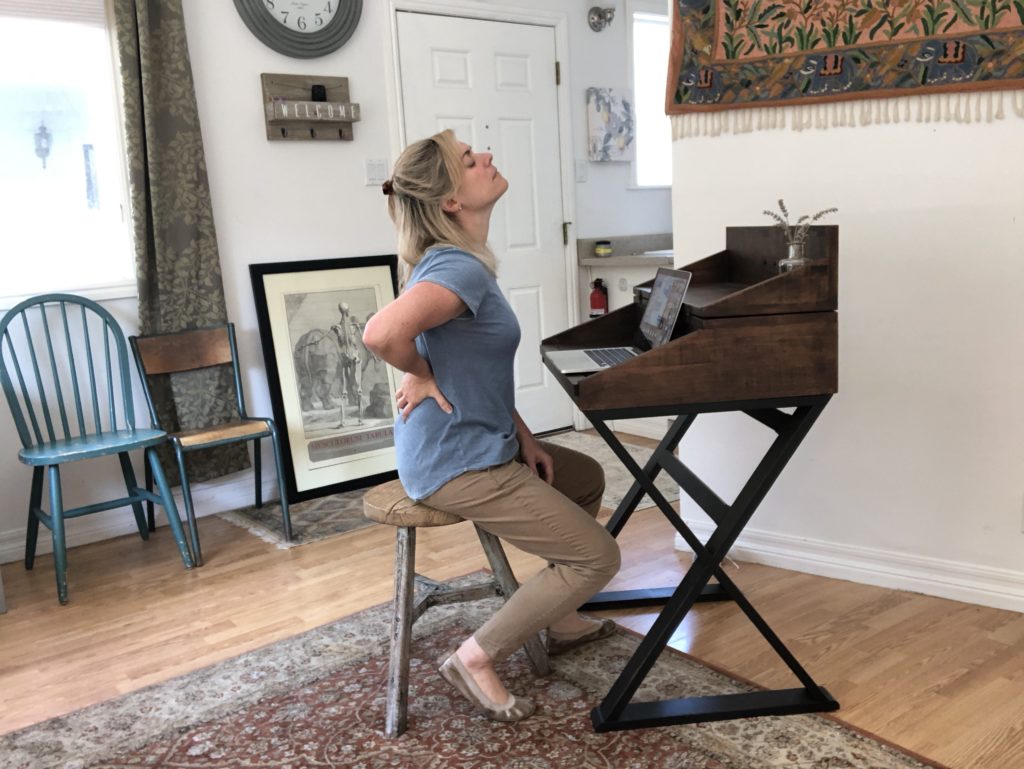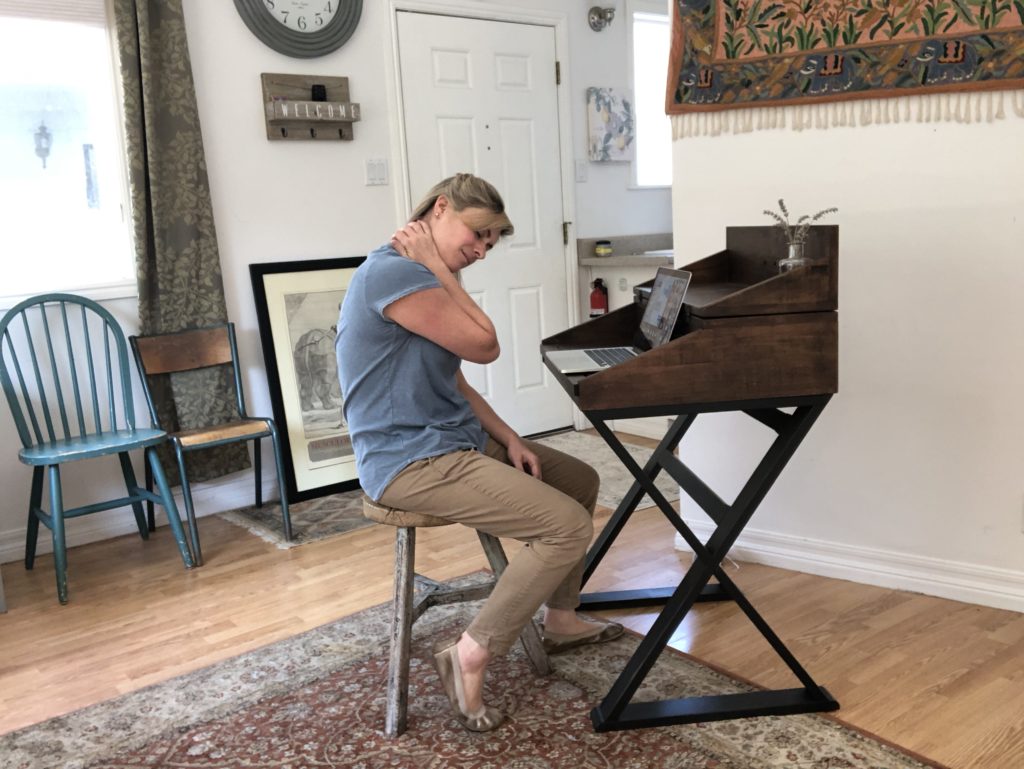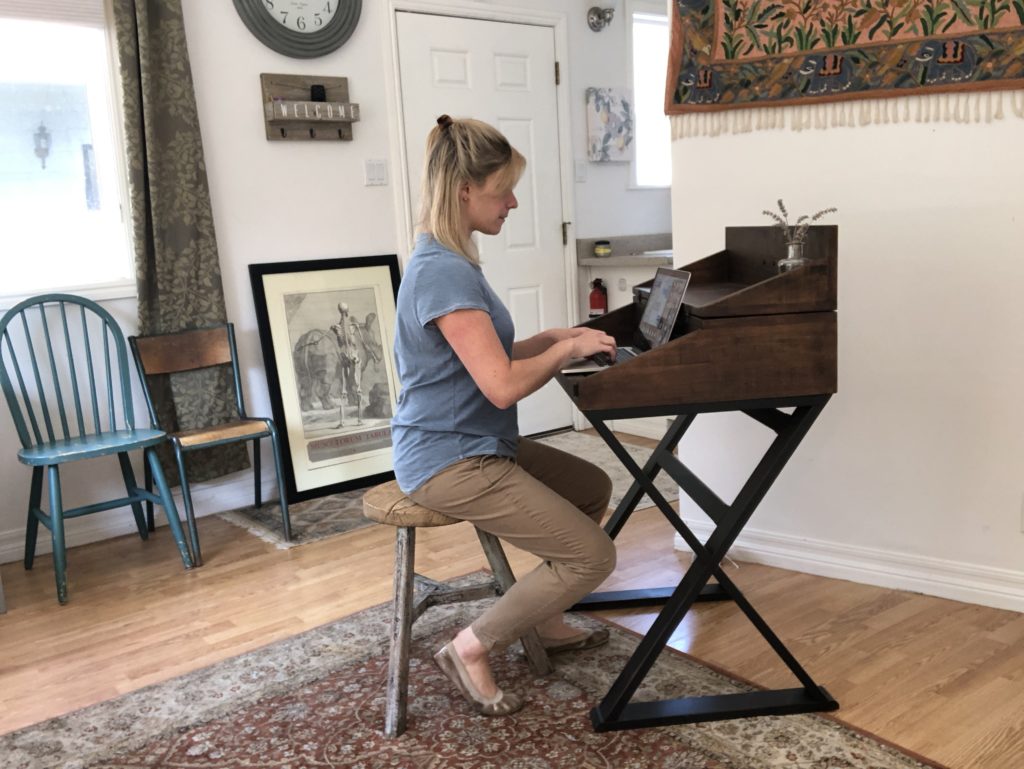
17 Aug How to Sit
Sitting can be easier than you think.
What creates neck, shoulder and back pain at work?
Not sitting itself, but HOW you sit.
Let’s look at some common ways people sit that create pain:

People then try to correct this slumping posture with a military style posture. 


“Good Posture” is when the body feels at ease.  You will know it because you can breathe easily and you are not still. In fact, the body loves to move. So allow yourself to rock forward on your sit bones (they are the shape of the bottom of a rocking chair for a reason). Rock a little forward and little back, and find where it is easiest to breathe.
You will know it because you can breathe easily and you are not still. In fact, the body loves to move. So allow yourself to rock forward on your sit bones (they are the shape of the bottom of a rocking chair for a reason). Rock a little forward and little back, and find where it is easiest to breathe.
Let your head balance on top of the spine–this means allowing the back of the head to flow up, and allow your head teeny tiny movements as it refinds balance over and over again.
Are your feet touching the ground? If they are not, you are causing yourself a lot of uneccessary pain. You want your feet to hold some of the weight of your head and torso. Rock a little forward from your hip joints (Not your waist) and give your big toes some of the weight of your body.
If you are doing this correctly, you should feel that it is easy to breathe. You should feel light and your whole body should be in constant teeny tiny movements.
Click here to see my 2 minute video of sitting:
Wondering how you can work like this? Studies show in children that moving while studying or learning, actually improves test scores! Why? because your brain works better when there is less tension in your body. So sit on those sit bones and allow yourself to move! The Act of Moving is the Act of Finding Balance.
Let me know your thoughts or any issues you are having with sitting. I would love to trouble shoot them with you!
Warmly,
Lena
